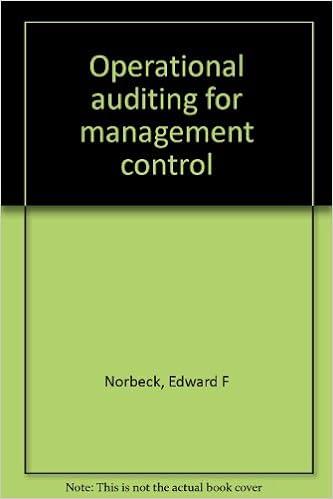Answered step by step
Verified Expert Solution
Question
1 Approved Answer
higlight correct answer QUESTION 1. A company purchased $8900 of merchandise on June 15 with terms of 3/10, n/45. On June 20, it returned $445
higlight correct answer
QUESTION
1. A company purchased $8900 of merchandise on June 15 with terms of 3/10, n/45. On June 20, it returned $445 of that merchandise. On June 24, it paid the balance owed for the merchandise taking any discount it was entitled to. The cash paid on June 24 equals:
$8246.
$8900.
$8201.
$8455.
$8633.
QUESTION
1. Given the following information, determine the cost of the inventory at June 30 using the LIFO perpetual inventory method.
June 1 Beginning inventory 46 units at $20 each
June 15 Sale of 38 units for $50 each
June 29 Purchase 38 units at $25 each
The cost of the ending inventory is:
$760
$920
$1110
$950
$1150
QUESTION
1. A law firm collected $3200 on account for work performed in the previous month. Which of the following general journal entries will the firm make to record this collection of cash?
2. Debit Legal Fees Revenue, $3200; credit Accounts Receivable, $3200.
Debit Accounts Receivable, $3200; credit Legal Fees Revenue, $3200.
Debit Cash, $3200; credit Unearned Legal Fees Revenue, $3200.
Debit Accounts Receivable, $3200; credit Unearned Legal Fees Revenue, $3200.
Debit Cash, $3200; credit Accounts Receivable, $3200.
QUESTION
1. A company has beginning inventory of 14 units at a cost of $12.00 each on October 1. On October 5, it purchases 13 units at $13.00 per unit. On October 12 it purchases 23 units at $14.00 per unit. On October 15, it sells 39 units. Using the FIFO periodic inventory method, what is the value of the inventory at October 15 after the sale?
$182.00
$336.00
$286.00
$132.00
$154.00
2 points
QUESTION 18
1. On July 1, a company paid the $4800 premium on a one-year insurance policy with benefits beginning on that date. What will be the insurance expense on the annual income statement for the first year ended December 31?
$3600.
$1200.
$2400.
$2000.
$4800.
QUESTION
1. For the year ended December 31, a company had revenues of $205,000 and expenses of $123,000. $41,000 in dividends were paid during the year. Which of the following entries could not be a closing entry?
Debit Income Summary $82,000; credit Retained earnings $82,000.
Debit Income Summary $205,000; credit Revenues $205,000.
Debit Revenues $205,000; credit Income Summary $205,000.
Debit Retained earnings $41,000; credit Dividends $41,000.
Debit Income Summary $123,000; credit Expenses $123,000.
QUESTION
1. Bedrock Company reported a December 31 ending inventory balance of $415,000. The following additional information is also available:
The ending inventory balance of $415,000 included $73,800 of consigned inventory for which Bedrock was the consignor.
The ending inventory balance of $415,000 included $25,600 of office supplies that were stored in the warehouse and were to be used by the company's supervisors and managers during the coming year.
Based on this information, the correct balance for ending inventory on December 31 is:
2. $303,000
$359,600
$340,400
$389,400
$241,000
QUESTION
1. If a company is considering the purchase of a parcel of land that was acquired by the seller for $94,000 is offered for sale at $168,000, is assessed for tax purposes at $104,000, is considered by the purchaser as easily being worth $158,000, and is purchased for $155,000, the land should be recorded in the purchaser's books at:
2. $104,000.
$156,500.
$168,000.
$158,000.
$155,000.
Step by Step Solution
There are 3 Steps involved in it
Step: 1

Get Instant Access to Expert-Tailored Solutions
See step-by-step solutions with expert insights and AI powered tools for academic success
Step: 2

Step: 3

Ace Your Homework with AI
Get the answers you need in no time with our AI-driven, step-by-step assistance
Get Started


